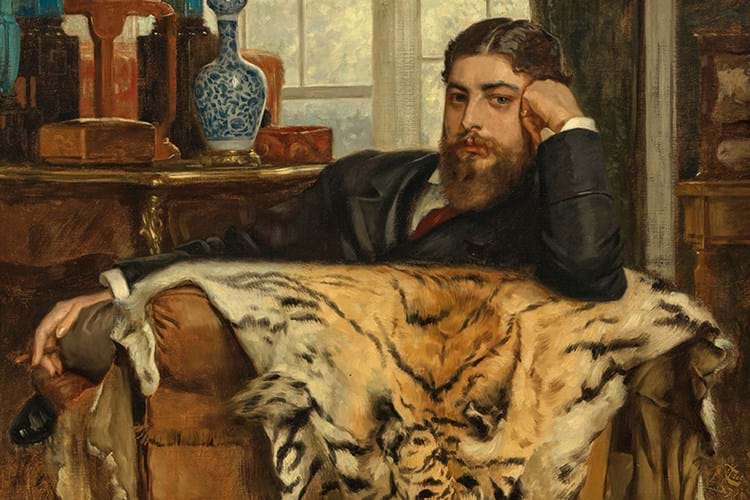Jacques Joseph Tissot (1836-1902) lived and worked in London and became known as James here.
Dating to the late 19th century, this portrait of Algernon Moses Marsden has been temporarily stopped from leaving the country in case a UK institution or donor can raise the funds to keep it in the UK.
Marsden is an infamous figure in the Victorian art world who later became known for his appearances in bankruptcy courts.
The painting has become an icon of the Aesthetic movement in recent years, despite having never been displayed during Tissot’s lifetime, and depicts a young man in a luxurious interior.
Arts minister Lord Parkinson of Whitley Bay said: “Tissot has had an important influence on British art, the full extent of which is only just beginning to be explored. Algernon Marsden is a fascinating painting and reveals much about the Aesthetic movement, Victorian art dealers, and Tissot’s significance for future artists.”
The minister’s decision to not issue an export licence follows the advice of the Reviewing Committee on the Export of Works of Art and Objects of Cultural Interest (RCEWA).
“Languidly handsome young man”
The committee noted the painting presents precarious, recent, and specifically Jewish affluence characteristic of this era, and emphasised this portrait’s value for research into social history and as a commentary on Marsden at this time.
Committee member Pippa Shirley said: “This languidly handsome young man, who fixes us with his direct, appraising gaze, invites us into a world which is both luxurious and deceptive. He looks completely at home in his environment, but the setting was in fact the artist’s studio, and the tiger skin and some of the elaborate furnishings are actually props.
“Tissot, referred to as ‘the French Millais’ was at this point one of the most celebrated and successful French artists on both sides of the Channel, and this portrait, painted in 1877 and very much of its time, precisely observed and beautifully painted, more than justifies that reputation.”
She adds: “Marsden’s history was almost literally rags to riches and back again – his family were Jewish entrepreneurs who had risen from poverty in the East End of London through a fortune made in the ready-made clothing business, but Algernon turned his back on that to set up as an art dealer, so encountering Tissot. It was not a wise move. Some years after this portrait was painted, he was declared bankrupt three times, thanks to his addiction to gambling, and eventually fled to America.
“His activities in the art market, his social circle and his relationship to Tissot and influence of French artists in London all merit further research, and it is very much to be hoped that the portrait can remain in this country to encourage that exploration.”
The committee made its recommendation on the grounds that the departure of the painting from the UK would be a misfortune owing to its outstanding significance to the study of Tissot’s influence on British art, as well as the culture of art dealers at this time.
The decision on the export licence application is deferred until September 16 and a recommended price of £2.43m (plus VAT of £72,900) is sought.
The portrait was originally commissioned by the Marsden family, who paid £50 in 1877 and it remained with the family until it was sold at Sotheby’s in 1971 for £2000.
It was then sold again at Christie’s in 1983 for £45,000 when it was bought by art dealer Agnews.
The current owner applied for an export licence which has been temporarily refused.






